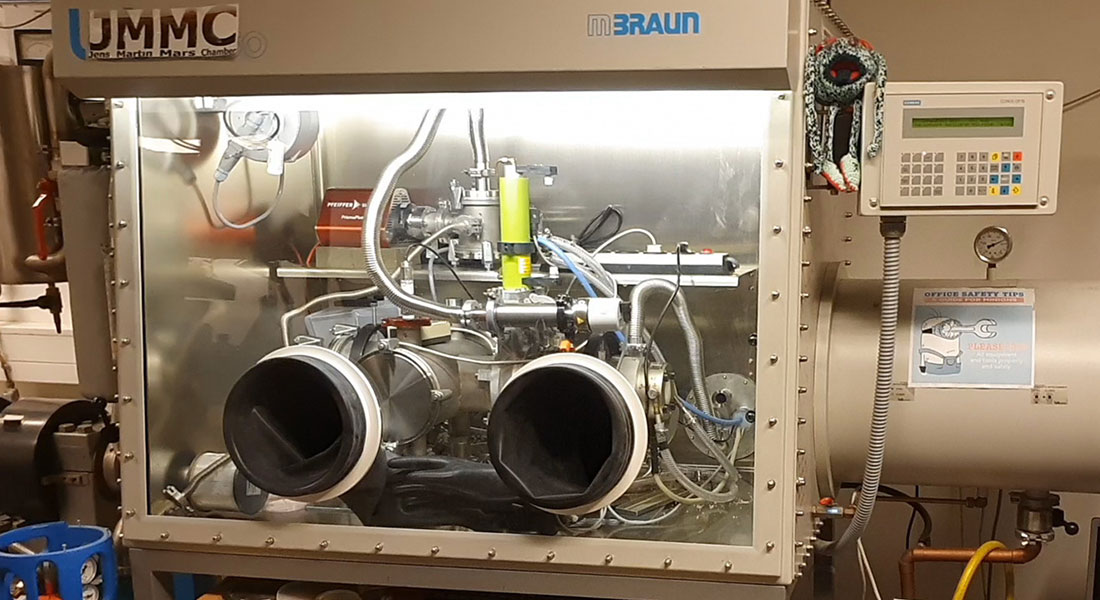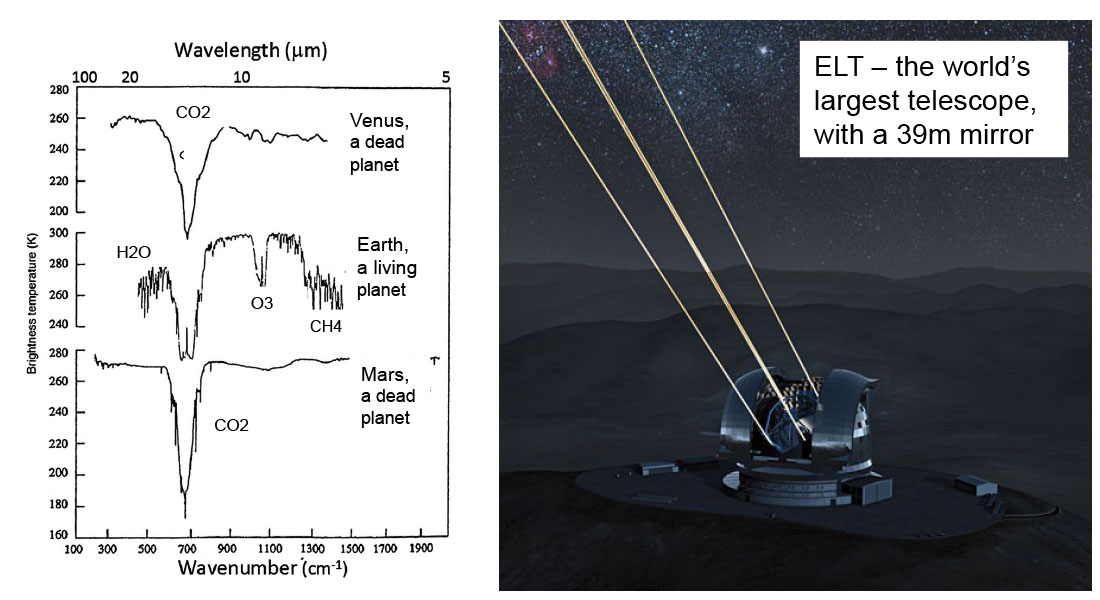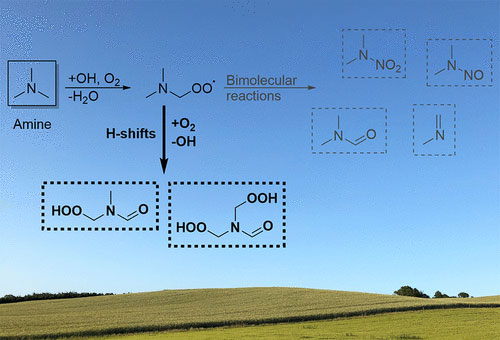Research
CELS research is focused on studies of the conditions on Earth, Mars, and exoplanets and how life affects the large-scale structure of their atmospheres.
Questions that interest us include: How can we detect whether there is life on other planets? What determines the structure and composition of the surface and atmosphere of exoplanets? Which chemical reactions are important for the atmospheric structure? Is cloud formation affected by bacteria? Do clouds facilitate the globalization of life once it settles somewhere?
Are there places on Earth that are too cold or too dry for any form of life to exist? Can we define what life is? How does radiation affect the atmosphere? Are there molecules, or combination of molecules, that can only exist in the atmosphere if biology is involved?
Our research facilities and numerical modelling include:
The Jens-Martin-Knudsen Mars simulation chamber
This is a small home-build chamber where we can control the temperature, pressure, atmospheric composition, and radiation field. Here we extract small quantities of exhaust gas from experiments with live bacteria for further analysis in the chemistry lab.

The chamber also includes a built-in mass spectrometer that can give a first impression of the composition of the produced gas.
Field collection of bacteria and other microorganisms
We can collect information from cold areas in Northern Greenland, as well as hot and dry areas on the Earth about the metabolism of bacteria from a wide range of conditions. Of particular interest for conditions on Mars are perchlorate-reducing bacteria from the Atacama Desert, Chile.
Microorganisms are known to produce a large number of gasses and volatile organic compounds with strong effects on atmospheres.
We will investigate how microbial activity can affect atmospheric composition and properties, and how bacteria can influence cloud formation in different atmospheres.
Numerical models of the structure and spectra of planets and stars reveal the composition of their atmosphere
 L-dwarfs and T-dwarfs are stars, brown dwarfs or hot exoplanets, in the temperature range around 1000 K to 2000 K.
L-dwarfs and T-dwarfs are stars, brown dwarfs or hot exoplanets, in the temperature range around 1000 K to 2000 K.
The drawing show examples of cloud layers of different heights in their atmospheres. Such clouds are not made of water droplets as on Earth, but could be droplets of metals or stones, dependent on the temperature and chemical composition of the atmospheres.
The red curve in the lower figure is an observed spectrum of an L-dwarf, together with our calculated spectrum in black based on our simulations of the structure and composition of the atmosphere.
By performing such simulations we learn about the conditions of the atmosphere.
Comparing well modelled spectra of exoplanets with observations may in a few years reveal the first signs of extraterrestrial life
Spectra of the Earth itself show clear signs of methane-producing microorganisms (CH4), photosynthesis (oxygen in the form of O3), and the existence of liquid water (H2O). Mars’ and Venus’ spectra show two lifeless planets with only CO2 in their spectra.
What will spectra of the first Earth-like exoplanets show?

If life affects the atmosphere on large scale, as on Earth, we will be able to see it in the spectra of nearby exoplanets from the coming ELT telescope.
 Molecular Spectroscopy
Molecular Spectroscopy
With use of purchased spectrometers (FT-IT, UV-vis) and home-built more sensitive spectrometers (cavity ring down, CRD, and photoacoustic laser, PAS) we record spectra of molecules.
We complement this experimental work with calculations of spectra with standard code and code developed in our group.
Modeling chemical reactions
Based on quantum chemical calculations, we model chemical reaction mechanisms and kinetics of these.
This often leads to new reactions not previously considered, and we estimate the effect of these new reactions in chemical models.

Modeling life-climate interactions
Super-computer simulations of individual convective cloud cells in a 480 km x 480 km area near the top of the planetary (here Earth) boundary layer.
- Blue are regions of high moist, while red represent dry regions Bacteria can influence the cloud formation, by acting as cloud condensation nuclei.
- Since clouds are essential for the atmospheric energy balance, bacteria can affect the energy budget of a planet’s atmosphere.
Modelling the bacteria-cloud interaction may therefore reveal bacteria in exoplanet atmospheres, and at the same time give information about how bacteria may spread globally and influence the state of the environment they are living within.

